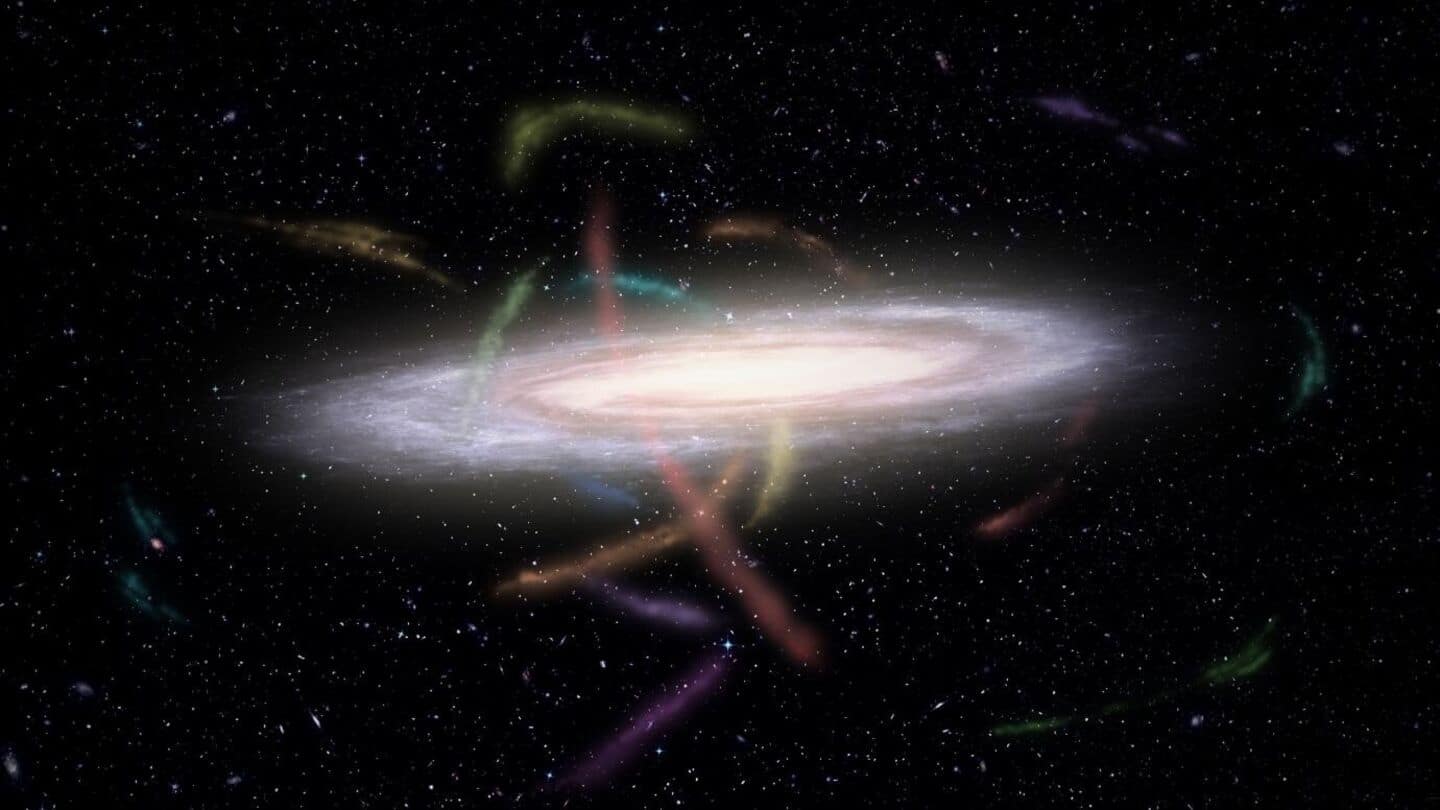
Almost 90 stellar streams identified by ESA: What are they?
What's the story
Using the European Space Agency's (ESA) Gaia satellite, astronomers have discovered 87 stellar streams linked to globular clusters (GCs) in our Milky Way galaxy. The results, which double the number of known GC stellar streams, was detailed in a research paper published on the arXiv pre-print server. Stellar streams are remnants of dwarf galaxies or globular clusters that once orbited a galaxy, but have been disrupted and stretched out along their orbits by tidal forces of their hosts.
Research implications
Stellar streams can help answer fundamental questions about Milky Way
The discovery of new galactic stellar streams, including those left behind by GCs, could help answer some critical questions about the Milky Way. For example, these streams could provide insight into the large-scale mass distribution of the galactic dark matter halo, and confirm whether or not our galaxy contains low-mass dark matter subhalos.
Technological advancement
New stellar streams discovered using automatic detection algorithm
A team of astronomers led by Yingtian Chen from the University of Michigan has discovered nearly a hundred GC stellar streams using an automatic detection algorithm called "StarStream." The researchers said, "The high detection quality makes StarStream a powerful tool to uncover GC streams that may have been missed by previous methods." Their findings include 34 high-quality streams within a 10-degree search radius and 53 low-quality ones with higher extinction or background density.
Mass analysis
Study also looked at mass loss rates of progenitor GCs
The study also looked at the orbit-averaged mass loss rate of the progenitor GCs associated with these streams. Most were found to have a mass loss rate between 1.0 and 100 solar masses per million years. However, no strong correlation was seen between this rate and other properties of the globular clusters.
Stream characteristics
Many newly discovered stellar streams misaligned with their orbits
The observations revealed that many new stellar streams are either wide or short, or misaligned with their progenitors' orbits. For instance, the stream of NGC 4147 is nearly a circular blob. This goes against the visual expectation that streams are thin features elongated along the progenitor's orbit. The authors of the paper said, "As many GC streams can be dynamically hot or spatially complex depending on the GC's mass and orbit, these streams are likely missed by traditional visually-based methods."